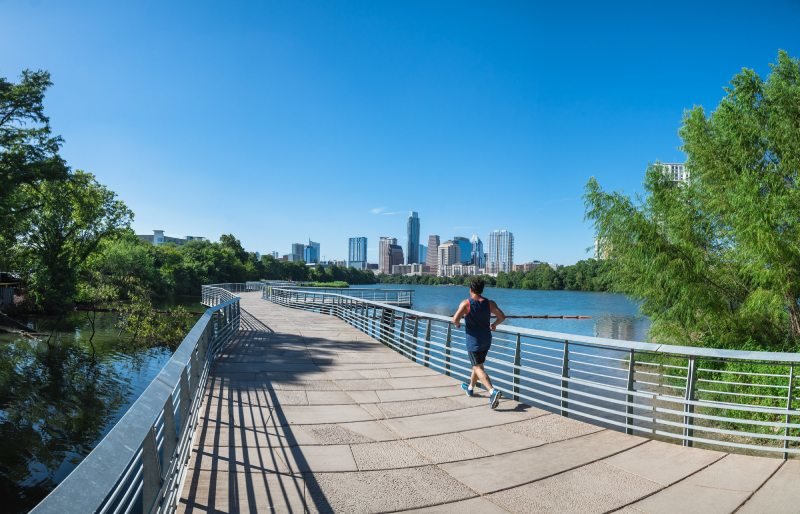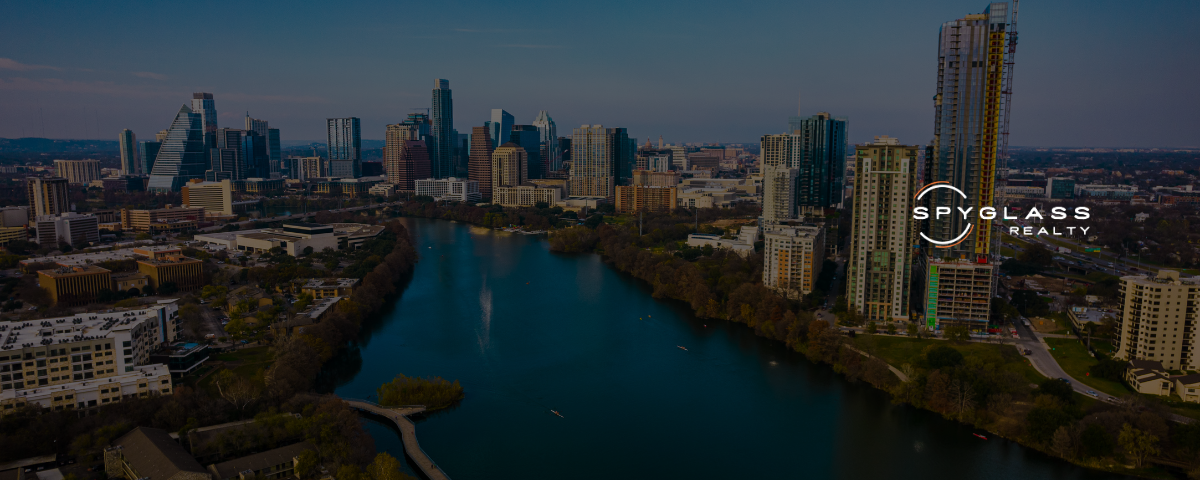Ever tried to predict the weather in Austin? Just like our beloved Texas skies, Austin's real estate market is equally dynamic and surprising.
A house here isn't just a structure of bricks and beams. It's a hot ticket into an eclectic mix of tech innovation, vibrant culture, and booming economy. But with so much growth happening at once – what does this mean for buyers, sellers, or investors?
Hold onto your cowboy hats folks because we're also looking at challenges that might ruffle some feathers. But don’t fret! There’s plenty of opportunity ahead too!
Are you prepared to take the reins and get started?
Austin's Real Estate Market Overview
 The real estate market in Austin is buzzing with activity. Home prices are soaring, and houses sell quickly due to high demand. The average home value in Austin as of October 2023 is $533,214 according to Zillow's Home Value Index.
The real estate market in Austin is buzzing with activity. Home prices are soaring, and houses sell quickly due to high demand. The average home value in Austin as of October 2023 is $533,214 according to Zillow's Home Value Index.
However, this surge is not just about the numbers; it's also a story of people finding their ideal homes or making profitable investments. Each house sold tells a story of families finding their dream homes or investors securing profitable deals.
This surge isn't without its challenges though - inventory levels remain low making it tough for buyers.
Housing Inventory Levels: A Closer Look
The Austin housing market in 2023 exhibits a dynamic inventory situation. Despite price decreases and inventory gains, the region still faces a need for more housing based on the January 2023 Market Report from ABoR. In October 2023, there was a 4.1% uptick in the number of residential homes sold throughout the MSA, reaching a total of 2,337 sales. This increase indicates that buyers are recognizing the market's value, even in the face of elevated interest rates.
This balance is crucial in understanding the market conditions, where a balanced market typically has around six months of inventory. Austin's current levels suggest a market that slightly favors sellers, providing them with some advantage in negotiations.
The Impact of Austin's Rapid Growth on Housing
Austin's rapid growth in 2023, coupled with its thriving tech sector, has created a profound impact on the housing market. The city's population witnessed a remarkable 5.3% increase from 2020 to 2022, a phenomenon attributed, in part, to the tech sector's robust growth.
Despite efforts to address affordability concerns, Austin continues to grapple with a housing affordability crisis. The city is navigating a lengthy battle to overhaul local rules, aiming to allow denser housing construction to address the growing demand. The overall housing inventory in the Austin metro area has increased by 8.3%, reflecting the challenges and changes in the market dynamics.
The interplay between Austin's rapid growth, the flourishing tech sector, and housing dynamics underscores the complex and evolving nature of the city's economic and real estate landscape.
Emerging Neighborhoods in Austin
Austin's property sector is constantly changing, with fresh neighborhoods sprouting up. One such area gaining traction is East Austin. Known for its vibrant art scene and local eateries, East Austin offers a unique blend of cultural diversity and affordability.
In short: Whether you're looking for urban flair or suburban comfort—Austin's emerging neighborhoods have something to offer everyone.
The Role of Tech Industry in Austin's Real Estate Market
Dubbed the "Silicon Hills," Austin has experienced a tech surge that is reshaping its real estate sector. Major companies like Apple and Google have set up shop here, bringing with them high-paying jobs.
This influx of tech workers needing homes to rent or buy has driven up demand, leading to an increase in property prices. In neighborhoods close to tech hubs, we're seeing even more drastic increases. Take the Domain area - it's not just becoming a tech hub but also a hotspot for new residents seeking modern living spaces within walking distance from their workplaces.
The question now becomes: Can this growth be sustained? With no signs of slowing down and plans for more businesses moving into town each day – it seems likely that Austin will continue being attractive to those looking at Austin real estate investments.
Challenges Facing Austin's Real Estate Market
With the city growing rapidly, it's getting harder to find affordable housing. The surge in remote work has made people more flexible about where they live
And then there’s the tech boom. The influx of high-income workers relocating for jobs at companies like Apple and Tesla is pushing property values sky-high - making it tough for locals with lower incomes to compete.
Growth brings opportunities but also significant hurdles that need addressing: gentrification issues, infrastructure needs, and traffic congestion – all adding pressure on living standards and affordability levels across Austin neighborhoods.
These challenges in Austin's real estate market, particularly the affordability concerns and rising property values, intersect with the broader context of mortgage rates. The current trend of mortgage rates, hovering above 7%, adds an additional layer of complexity for potential homebuyers, making it imperative to navigate the market strategically.
Mortgage Rate Forecast
A recent article by Forbes has shown the volatility in mortgage rates, reaching a peak of 7.79% in October, the highest since November 2000. Despite a slight downturn to 7.29% by November 22, experts anticipate rates remaining above 7% for the rest of 2023. The Federal Reserve's decision to maintain high-interest rates is a contributing factor.
Various experts in the said article anticipate mortgage rates exceeding 7%, with differing opinions on future trends. Some foresee a gradual decline, while others predict rates tightening slightly by the end of the first quarter of 2024. While predicting rates remains challenging, experts suggest a downward trend over the long term, impacted by low housing inventory and inflation rates.
Opportunities in Austin's Real Estate Market
Austin’s real estate market is teeming with opportunities. Despite the city's rapid growth, there are still untapped neighborhoods waiting for savvy investors to discover them.
For those who have an eye on luxury properties, areas like Downtown Austin, Westlake, and Tarrytown offer premium homes with stunning views of Lake Austin. It’s not uncommon for these high-end houses to fetch top dollar when they hit the market.
In terms of investments, multifamily units present another attractive prospect in Austin's vibrant rental scene. With growing demand from newcomers moving into town because of job prospects or seeking out that famed 'Austin lifestyle', this segment provides stable returns.
If you're willing to ride the wave rather than resist it, Austin's burgeoning tech industry can also give your investment portfolio some extra horsepower - pun intended. Tech-driven growth means more well-paid professionals needing places near their workplaces or transit hubs—a gold mine if you've got rental properties ready.
So whether you're hunting deals as a first-time buyer or seasoned investor—Austin's diverse real estate market might just be your next stop.
Conclusion
Unpredictable as Austin weather, our real estate market is equally full of surprises. The key takeaway? Be ready for a wild ride. The city's rapid growth and booming tech industry are shaking things up. As more folks flock to Austin, housing demand outpaces supply, pushing home prices upward.
Emerging neighborhoods are heating up the scene with promising opportunities. But remember - there might be some clouds on the horizon too.
The challenges we face in our forecast aren't small potatoes either; affordability could become a bigger issue if left unchecked.
In all this hustle-bustle though, one thing's certain: There's no shortage of opportunities in our beloved ATX!
To navigate this exciting yet complex landscape, reach out to our dedicated team of real estate consultants. Click here to speak directly with a consultant who can provide personalized insights, answer your queries, and guide you on the path to success in the Austin real estate market.


Leave A Comment